Review: Google Nexus 6P
Nov 10, 2015, 5:30 PM by Eric M. Zeman
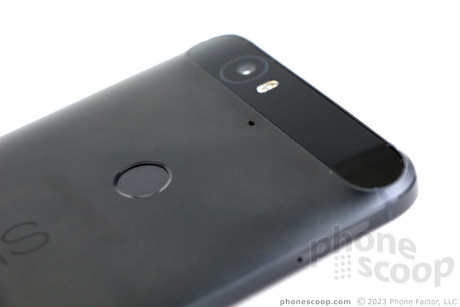
Google's flagship Android smartphone for the year is the Nexus 6P, made by Huawei. This slim and attractive handset features a metal design, quad HD display, fingerprint sensor, and Android 6.0 Marshmallow. Here is Phone Scoop's in-depth report.
Hardware
Is It Your type?
This year is unique in that Google pushed out not one, but two new Nexus smartphones. Nexus-branded handsets are for a targeted set of people: those who want a "pure" Android experience and the promise of first access to new versions of Android from Google. The Nexus 6P — a successor to the 2014 Nexus 6 — is a flagship handset that ships with Android 6.0 Marshmallow. If you want to latest from Google in an attractive and well-made handset, the 6P is for you.
Body
The 6P is made by Huawei, while the 5X is made by LG. Where the 5X is small and plastic, the 6P is large and metal.
Huawei made use of decent materials to forge the 6P which — like the 5X — has simple lines defining its shape. The 6P is nearly identical in terms of size and shape to the iPhone 6s Plus. In fact, more than one person thought I was using an iPhone and not an Android handset when they spied the 6P in my hand. The front surface is as plain as can be. The rear surface is unique thanks to the enlarged top end of the phone, which is where the camera and flash are located. There is nothing earth-shattering about the 6P's design, but Nexus phones have never been about flashy designs. As if to underscore that fact, the 6P is available in three shades: frost, graphite, and aluminum; not bright, colorful hues.
The 6P is perhaps the best handset from Huawei that I've put my hands on. It is the most refined Nexus phone to-date, thanks to the metal rear panel, chamfered edges, and slim profile. It doesn't have quite the same quality as the iPhone or HTC One A9, but it's really close. I have no complaints about the quality whatsoever.
Like the iPhone 6s Plus, the Nexus 6P's large footprint makes it impractical for some users. It may be slim, but the width may be too much for those with smaller hands to grasp. It's worth noting that the 6P is significantly smaller than the Nexus 6, which had a bigger screen. That's good news. Thanks to the metal skin, the 6P is a weighty handset. It's well balanced, and slips into pockets quit easily. Still, the footprint means the 6P's presence is always felt.
Huawei gave the 6P a 5.7-inch screen. It takes up a fair amount of the phone's front face, but there are still healthy bezels above and below the display. Unlike the 5X, the 6P does have stereo speakers, which are plainly visible slits in the glass. There are no buttons, and the user-facing camera is more or less invisible. I like the uncluttered look.
The side and back are formed from one piece of metal. I really appreciate the attention to detail in the fine treatment of the edges and chamfers, which give the phone a significant dash of class.
The only two buttons are positioned on the right of the phone. The screen lock button is the smaller of the two and placed on top. The buttons have good profiles and are easy to find/use. Travel and feedback is significantly better than the same buttons on the 5X. I like that the screen lock button has a ribbed texture to help it stand apart. The SIM card tray is located on the left side of the phone. You'll find the headphone jack and USB Type-C charging port on the bottom.
A few words about Type-C. This connector is reversible, which makes it much easier to use; no more futzing about trying to figure out which way to insert the darned thing. It is fast, can send power in both directions, and represents the future of phone charging/data transfer. For now, however, accessories are limited. In fact, the phone comes with one Type-C cable and a wall wart that works only with the included Type-C cable. In other words, if you lose either the cable or charger, you're screwed. You may want to buy extra cables and/or adapters online.
The 6P's rear panel is not removable; the battery is sealed in. That may be a dealbreaker for some. Like the bulk of Nexus devices, the 6P doesn't support expandable memory.
The 6P has a fingerprint sensor and it's positioned on the back surface. I didn't have any trouble locating the sensor nor placing my index finger on it. I found it comfortable to use. The camera module is hidden behind a raised glass surface at the top of the rear panel. The dual LED flash is visible, but the camera lens itself is hard to spot in the black glass.
I like the Nexus 6P's design, materials, and build quality much more than those of the Nexus 5X. The improved experience will cost you $120 more, though, which puts it in a different price category.
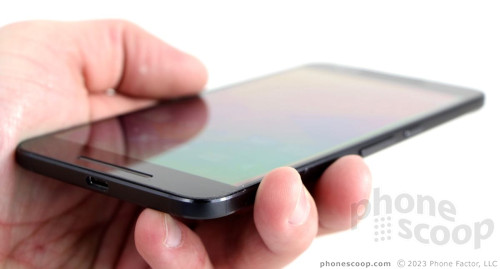
Screen
The 6P's display measures 5.7 inches across the diagonal and offers quad HD (2560 x 1440) resolution. The screen looks fantastic. Quad HD displays will spoil your eyes. The resolution is incredibly sharp and the AMOLED pixels of the 6P are bright. Colors are a bit intense (at the expense of accuracy), but viewing angles are excellent. I had no trouble using the 6P outdoors under a sunny sky. It's a great screen.
Signal
The Nexus 6P is sold unlocked with support for a wide range of networks. I tested it on AT&T's network in and around New York City and came away pleased with the results. The 6P never lost its connection to AT&T's network, though it dropped from LTE to HSPA+ on several occasions. I was able to connect the majority of calls on the first dial. The 6P did not miss nor drop calls while I tested it, and it was able to keep calls connected when traveling down the highway. Data speeds were just a bit quicker than those I saw from the 5X. When used to surf the net, scan through Twitter, and upload images to Instagram, the 6P played on even footing when compared to other AT&T handsets.
Sound
The 6P is a solid voice phone. Volume through the earpiece is more than adequate to make calls audible at home, the office, and even busy coffee shops or diners. Clarity is also quite good; I had no trouble understanding callers in a variety of locations. Voices don't necessarily sound warm and fuzzy, but I didn't experience any distortion or other oddness.
The speakerphone dials volume back a bit, but quality is still solid. I found the speakerphone loud enough for home and the office, but it was hard to hear in the car or a restaurant. Voices were nice and clear, and even with the volume all the way up, the speakerphone didn't exhibit any distortion.
Ringers and other alerts were always able to grab my attention. The vibrate alert was always able to make me aware of incoming calls and text messages.
Battery
The 6P delivers battery life far superior to the 5X. Huawei bestowed it with a 3,450 mAh lithium-polymer battery, and it easily lasts through an entire day. I consistently had 25% or more battery capacity left at bedtime over a week's worth of heavy testing. I tested the 6P with LTE, Bluetooth, GPS, WiFi, and NFC radios on, with the screen set at 50% brightness. It covered my butt no matter how much I used it.
The 6P supports rapid charging technology, as well. According to Google, the 6P can ingest about 7 hours of uptime after about 10 minutes when plugged into a charger. Of course, with the USB Type-C plug, making sure you always have a charger available isn't as easy as with older phones. But I don't think you'll need to use the basic battery saver tool.
Bluetooth, GPS, NFC, WiFi
All of the 6P's radios performed as expected. The phone supports a fairly wide set of Bluetooth profiles, and I had no trouble pairing with PCs, speakers, headphones, and my car. Call quality through my car's hands-free system was quite good. Clarity was nice and volume was sufficient enough for highway speeds. Music sounded quite punchy through my favorite Bluetooth speaker. The 6P's Bluetooth outperformed the 5X's by a significant margin.
Google Maps ran perfectly on the 6P, and the GPS radio was able to peg me in Maps quickly and accurately. It located me within 5 seconds, and was accurate to about 25 feet.
The NFC radio worked great for helping pair the 6P with Bluetooth devices, and also did its job when taking advantage of Tap & Go during initial setup.
The WiFi worked very well.
Software
Editor's Note: Since the Nexus 6P runs the exact same version of Android as the Nexus 5X, portions of the text below have been carried over from our review of the 5X. Rest assured, we tested every feature and adjusted our commentary when and where appropriate.
Lock Screen
The new lock screen in Android 6.0 Marshmallow is hardly different from the Lollipop lock screen. However, the Nexus 6P lets you use your fingerprint to unlock the phone.
The 6P suggests you register at least one fingerprint during the setup process. Google's Imprint — the software Google uses to manage your fingerprint — is lightning quick. Training the 6P to record a fingerprint consumed less than half the time it takes to do the same on the iPhone 6s or Galaxy S6. It's incredibly fast. Along with a fingerprint, the 6P suggests users set up a backup password, PIN, or pattern. I never needed to rely on them. The fingerprint reader is so fast, it unlocks the 6P in an instant. While first-generation fingerprint readers were often slow and inaccurate, the newer hardware reaching today's phones gets the job done in short order.
The information made available on the lock screen varies a bit depending in your preferences. Like Motorola's Ambient Display, the Nexus 6P will push monochrome alerts to the dark screen, such as the presence of new emails, new messages, or missed calls. This means you will occasionally see alerts when the phone is at rest. The screen won't wake when tapped like an LG G4, or if you wave your hand over it, like the Moto X.
Waking the screen with the lock button reveals the clock and a list of notifications below it. These notifications can be customized to reveal their content or not, such as the text of a message. There are shortcuts to Google voice search and the camera in the bottom corners. The Quick Settings screen is also accessible from the lock screen.
Home Screens
The Android 6.0 home screen — which, on Nexus handsets, means the Google Now Launcher — is more or less carried over directly from Android 5.0. A single home screen is active when you first boot the phone, and it has several shortcuts added to the dock at the bottom, and several folders chock full of Google's apps and services. As always, you can arrange these however you wish, add widgets and change wallpapers, and add more home screens. The app drawer is now arranged vertically, rather than horizontally, and places different app suggestions at the top of the screen. The settings menus are unchanged when compared to Lollipop.
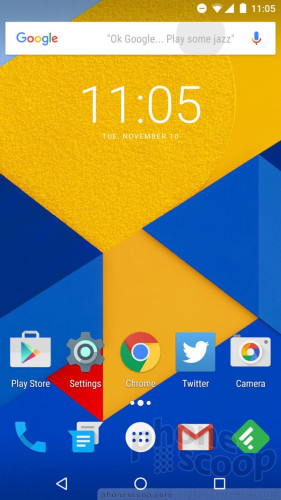
The Google Now screen has been refreshed a little bit with smaller, more proactive cards. Now lets you customize your home/work locations, the types of sports, stocks, entertainment, and news you care about, as well as your favorite method of personal transportation (biking, driving, public transport, Tauntaun.)
The Google Search bar is now more colorful (to match the new Google logo) and offers handy suggestions about voice commands you can give. As noted in our review of Android 6.0 Marshmallow, Google Search is able to handle far more voice-based queries and commands. You can easily open the calendar and set appointments and/or reminders; open music apps and listen to songs; and of course dictate messages. The 6P allows you to train it to respond to a catchphrase, which means you can say "OK Google" and search from just about any screen.
Now on Tap is one of the marquee features of Marshmallow. A long press of the home button will cause the 6P to perform a quick search based on what's on the display and offer information/suggestions as a result. Now on Tap is best used when discussing plans or seeking other, contextual information about people, places, locations, events, and so on. It works as long as there's something interesting on the screen that you want to know more about. Now on Tap performed a bit faster on the 6P when compared to the 5X.
Speaking of performance, the 6P has an octa-core processor. The Snapdragon 810 is joined by 3GB of RAM and either 32 or 64GB of storage. The 6P performs like a banshee escaping the bounds of hell. It screams through everything. Not once did it stutter, lag, or feel slow; it was fast across the board and blew the 5X out of the water.
Camera
The 6P doesn't have a dedicated camera button, but a double press of the lock button will rouse the camera from slumber.
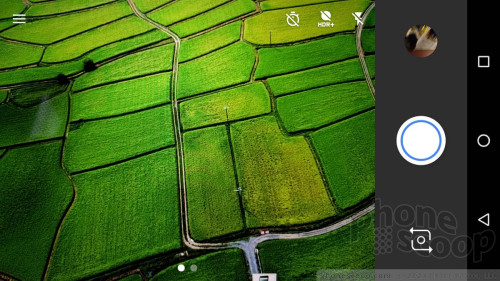
The camera represents the most significant difference between the 5X and 6P in my opinion. Where the 5X is agonizingly slow, the 6P is fast and nimble. The juxtaposition of performance is like night and day.
The camera software itself is the same between both phones. The 6P's camera app has a fairly basic feature set. Controls are spread out all over the place. The shutter button, user-facing camera, and gallery are all positioned along the right side of the screen. There are simple tools along the top for setting a timer, setting HDR to on/off/auto, and setting the flash to on/off/auto.
There are four shooting modes: auto, photo sphere, panorama, and lens blur. The first three are old hat. Lens blur lets you create shots where the subject is sharp, but the rest of the image is out of focus (also called the bokeh effect). This shooting mode actually requires some technique, as you have to move the camera (but not too fast!) while shooting the image. This allows the camera to gather some perspective data and then render the image. Rendering on the 6P is less than half the time of the 5X, which means about 4 seconds as opposed to 12 seconds or longer. After the image has rendered, you can adjust the point of focus and how far out it spreads. Google's version of this feature is inferior. Other companies have produced easier-to-master bokeh tools that deliver dramatically superior results.
There are three ways to capture regular images: press the screen lock button, press the on-screen button, or press the screen first to focus and then press the shutter button. The 6P focuses and captures images in a blink. It's on the same level as the LG G4 and Samsung Galaxy Note 5. It beats the 5X's camera speed by a country mile. The camera is painless to use, which is how it should be.
Need to shoot video? Swipe the screen and the 6P will jump to video mode. There aren't too many video options. You can shoot at 30 frames per second in 4K, 1080p, or 720p, or up to 120 frames per second (for slow motion results) in 1080p or 720p. That's about it.
Photos/Video
The Nexus 6P and 5X supposedly use the same 12-megapixel sensor. Even so, I think the images produced by the 6P are marginally better than those coming from the 5X. It's not clear what's responsible for the disparity, but the results are real.
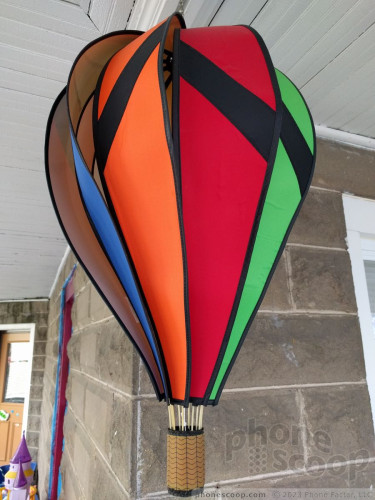
The majority of images were sharp, free of grain, and showed accurate exposure/color. I found the 6P produced good pictures in good and poor shooting conditions alike. The only minor issue I saw here and there was white balance — which is easily corrected in editing. I can't give you a measurable quantification of how much better the 6P's images are compared to the 5X's: they just are, by a bit. That said, the 6P is still out-shot by the iPhone 6s, LG G4, and Samsung Note 5 / S6 Edge+, by a small margin.
I'd say the majority of folks — including power users — will be happy enough to use the 6P as a daily shooter.
Don't bother shooting 4K video with the 6P. It's not that it doesn't produce good results, but with 32GB of storage (or even 64GB), that footage will munch down memory in short order. Moreover, it's useless without a 4K TV or monitor. Stick with the 1080p capture mode, which does well enough to satisfy the bulk of users. I was pleased with the 6P's video footage and think it will suffice as a daily shooter for regular Joes and power users alike. I'd rate the 6P's video capture powers on par with those of the 5X.
Google Stuff
The Pure Android Experience offered by Nexus phones means you don't get any bloat, just lots of Google stuff. There are 29 apps installed on the 6P out of the box, which is about half as many as are typically packed onto phones sold by the carriers. The lack of bloatware and junk is one of the many appealing things about owning a Nexus handset.
Wrap-Up
The Nexus 6P may be $120 more than the Nexus 5X, but that is money well spent. In this case, the 6P solves all the problems evident in the 5X with only a few drawbacks.
The 6P is a fine handset from Huawei, thanks to the metal design, fine build quality, and solid spec sheet. The screen is great, battery life is better than average, signal performance is on track, and voice quality is at least on par with other AT&T phones. More importantly, the Snapdragon 810 crushes the 5X's 808 and delivers a significant upgrade in terms of speed and camera results.
Perhaps the biggest knocks I can make against the 6P? It's large-ish, heavy, and $500. That's not complaining much.
Android 6.0 Marshmallow is the 6P's best feature — although Marshmallow isn't exclusive to the 6P. Google's latest operating system performed flawlessly on the 6P, and the Nexus Imprint fingerprint tool is great.
I truly believe the Nexus 6P is worth the $499 asking price. Huawei and Google did a fine job in crafting an appealing handset that moves the Android bar a notch higher. If you want a Pure Android experience on a great piece of hardware, the Huawei Nexus 6P is definitely the way to go.

Comments
No messages


















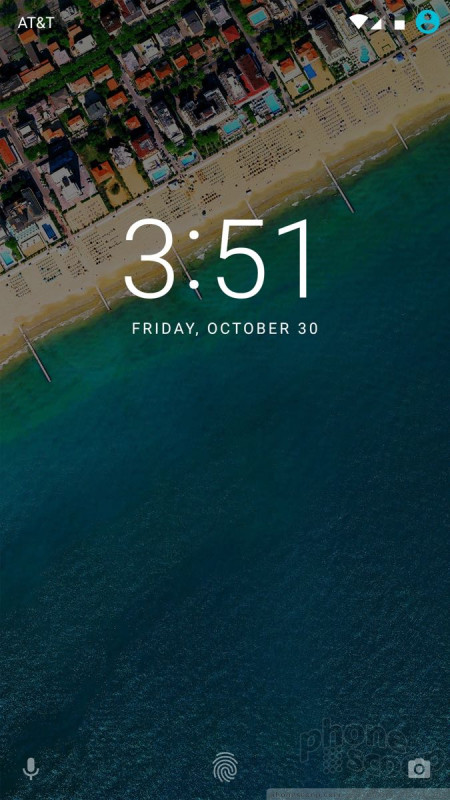



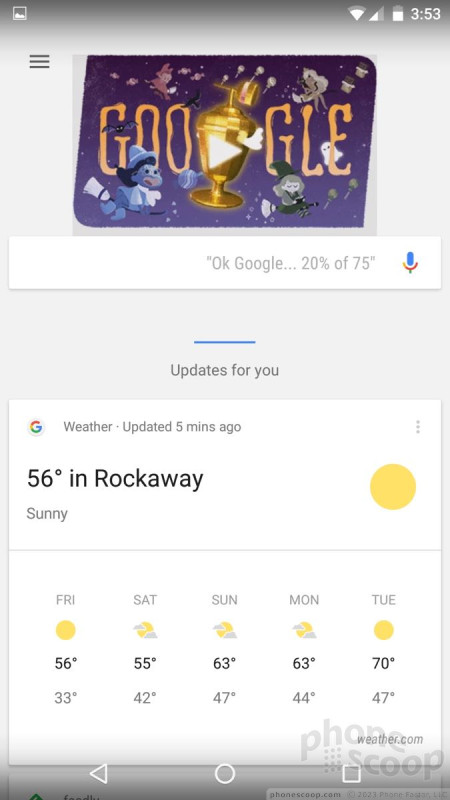




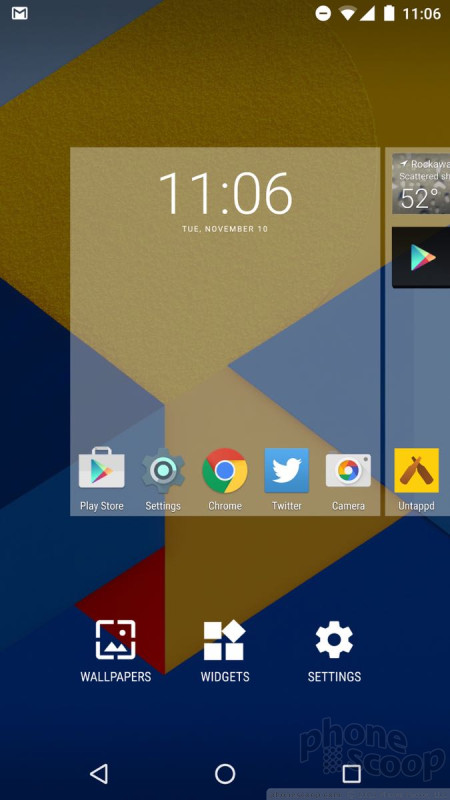





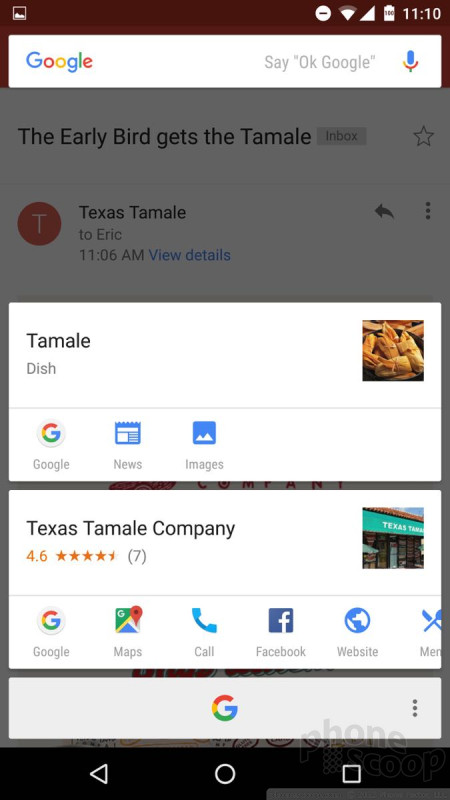



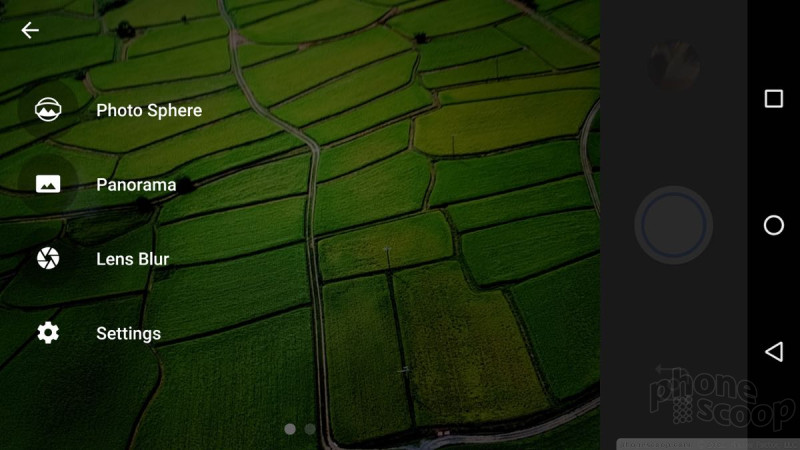




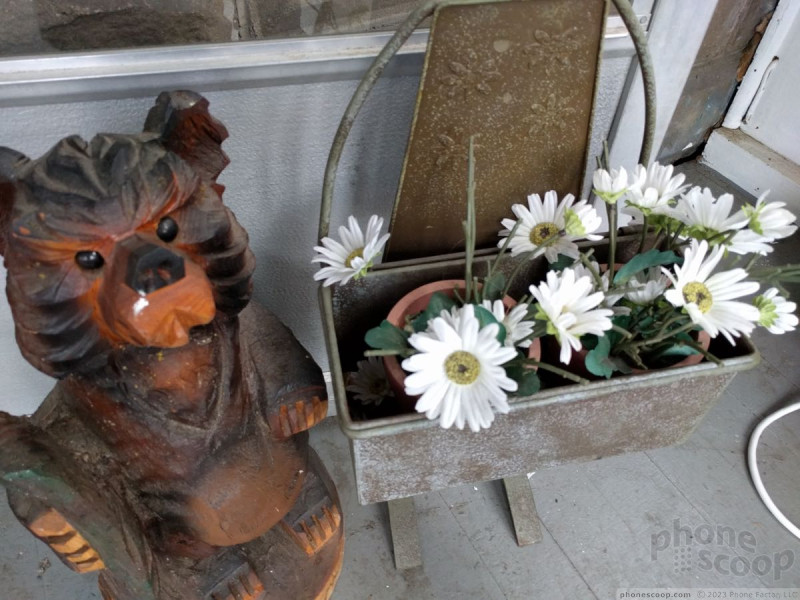
















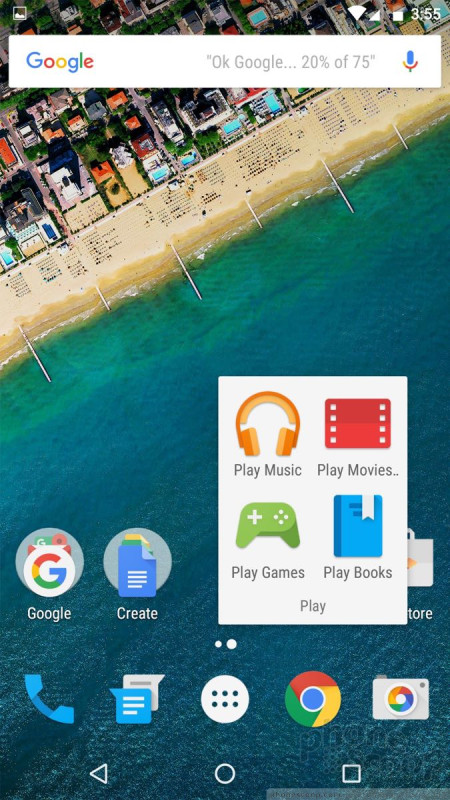





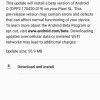 Google Pushes Minor Update to Android O Beta
Google Pushes Minor Update to Android O Beta
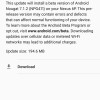 Google Pushes Second Beta of Android 7.1.2
Google Pushes Second Beta of Android 7.1.2
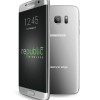 Republic Wireless Improves Android Lineup
Republic Wireless Improves Android Lineup
 Google Releases Final Developer Preview of Android 7 Nougat
Google Releases Final Developer Preview of Android 7 Nougat
 Google Reveals When Nexus Phones Will Cease Receiving Android Updates
Google Reveals When Nexus Phones Will Cease Receiving Android Updates
 Huawei Nexus 6P
Huawei Nexus 6P










